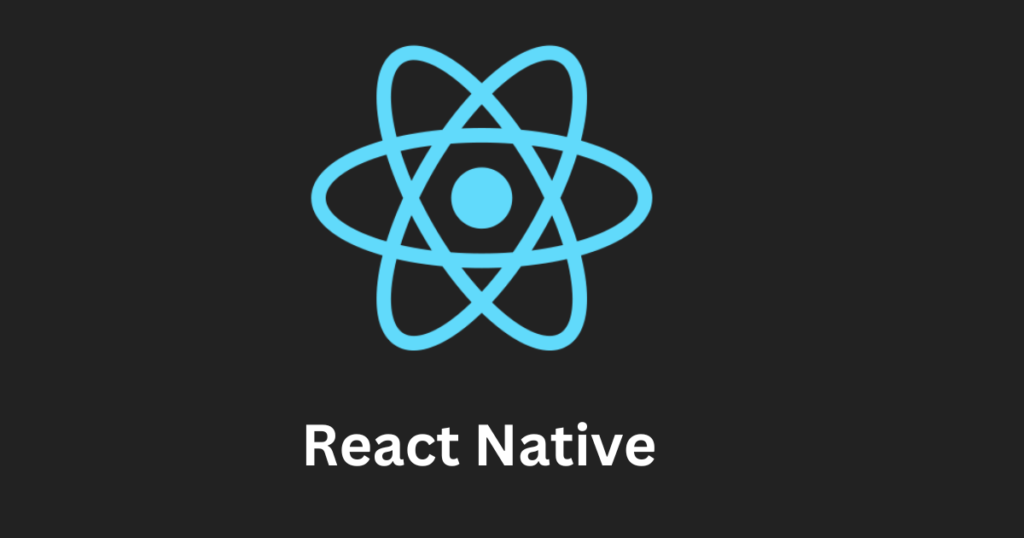Mobile app development is an important aspect of the modern digital world. With the increasing use of smartphones and increasing demand for mobile apps, it is important to choose the right coding language to develop your app.
In this article, we will evaluate the best coding languages for mobile app development in 2023 based on various criteria such as popularity, ease of use, cross-platform compatibility, and more.
Table of Contents
ToggleIntroduction
Mobile application development is the process of creating software for wireless, portable devices like smartphones and other handheld electronics.
In the early days of mobile apps, developing a native app was the only way to guarantee that it would run well on any device. This required writing new code specifically for each device’s processor.
The creation of mobile apps is expanding quickly. Organizations across industries must satisfy consumer expectations for real-time, practical ways to complete transactions and obtain information, from retail, telecommunications, and e-commerce to insurance, healthcare, and government.
Cross-platform Development
Cross-platform development is the process of creating programs that can be used on several operating systems, including iOS and Android. Due to its low cost and broad audience appeal, this strategy has grown in popularity. React Native, Flutter, Xamarin, and PhoneGap are a few well-liked cross-platform development tools.
However, it is crucial to weigh the benefits and drawbacks of cross-platform development, including the requirement for a speedy Internet connection and the potential for compatibility problems.
Read also:- Best coding tutorials for game development in 2023
Popular Programming Languages for Mobile App Development
1.Java
Java is one of the most widely used programming languages for developing mobile applications.
The Java Virtual Machine (JVM), which is required for Java code to run, is installed on all platforms, making Java a portable language. This is particularly helpful when developing mobile apps as they need to function on a range of different hardware and operating systems, including Android and iOS.

java is an object-oriented programming language, making it simpler for developers to create intricate and captivating user interfaces for mobile applications. A wide range of frameworks and tools are available in this for creating graphical user interfaces (GUIs) that can be customized to the specific requirements of mobile apps.
It is a secure language that is ideal for building apps that handle sensitive data, such as private information or financial transactions.
Automatic memory management features in Java help developers prevent memory leaks and buffer overflows while also enabling them to control access to critical data.
there is a sizable community of Java developers that work to improve the language and the tools that go with it. The development process can be made simpler by using the numerous third-party libraries and frameworks that this community has produced.
Since many of these resources are free, it is simpler and more economical for developers to create top-notch mobile apps.
It has a track record of success as it is utilized by numerous significant businesses and organizations to create enterprise-level applications. As a result, businesses may feel confident that they are employing a dependable and well-supported language when developing mobile apps.
2. Swift
Swift is a modern programming language that was created by Apple and introduced in 2014. It is primarily used for developing iOS and macOS applications. Over the years, Swift has gained popularity and become one of the most preferred programming languages for mobile app development.

Swift’s readability and simplicity are two of its major selling features. Swift is a fantastic choice for developers who are new to programming since it has a clear syntax that is simple to read and write. This simplicity of use enables programmers to produce quicker, more error-free code, which reduces development timelines and improves user experience.
Swift is known for its effectiveness. Prior to the release of Swift, Objective-C was the primary programming language used for iOS and macOS development and runs quicker and more effectively than Swift code. Swift is a fantastic option for creating complicated and resource-intensive apps because of its improved performance.
Swift is a secure language as well. It was created with security in mind and does away with common programming mistakes like null pointers and buffer overflows that can result in security flaws. Because of this, Swift is a good option for creating applications that need a high level of security, like those for the financial or healthcare industries.
Swift’s compatibility with the Apple environment is another perk. Since Swift was developed by Apple, it is fully compatible with their Xcode and iOS development environments as well as their development tools. This decreases the time and effort needed to design, test, and deploy applications while also making it simpler for developers to create high-quality applications for Apple devices.
In addition, Swift is an open-source language, which allows for unlimited distribution and unrestricted access to the source code. Because of this, there is now a sizable developer community that works together to develop Swift and the tools that go along with it. The development process can be made simpler by using the numerous third-party libraries and frameworks that this community has produced.
Swift has a bright future. Apple is actively attempting to improve the language and has continued to invest in it. Swift is a wonderful option for creating a variety of applications and is anticipated to continue to gain popularity because of Apple’s backing and growing user base.
In conclusion, Swift is a fantastic option for creating mobile apps for a number of reasons. Developers wishing to create high-quality, effective, and secure mobile applications will find it to be an excellent choice due to its simplicity and readability, performance, safety, interaction with the Apple ecosystem, open-source nature, and future potential. Swift is a language that is worthwhile learning, regardless of your level of experience as a developer.
Read also:- The Best Ultimate Guide to Coding Career Advancement in 2023: Get Certified
3. Kotlin
Kotlin is a modern, cross-platform, statically-typed programming language that was first released in 2011. It was designed to manage some of the limitations of Java, which is the most commonly used programming language for Android app development. Over the years, Kotlin has become increasingly popular among Android developers, and it is now officially supported by Google as an alternative to Java.

There are many reasons why developers are preferring to use Kotlin for mobile app development:
- Interoperability with Java: One of the biggest benefits of Kotlin is its interoperability with Java. This means that developers can use both Java and Kotlin in the same project, and call Kotlin code from Java and vice versa. This allows developers to gradually adopt Kotlin in their existing Java projects, without having to rewrite everything in a new language.
- Improved Syntax: Kotlin has a more concise and expressive syntax than Java, which makes it easier to write and maintain code. This results in fewer lines of code and makes the code more readable and understandable. For example, Kotlin has null safety built-in, which helps prevent null pointer exceptions, a common source of bugs in Java code.
- Enhanced Functionality: Kotlin provides several new features and enhancements over Java, such as extension functions, higher-order functions, and data classes. These features make it easier to write code that is more concise, maintainable, and readable.
- Better Performance: Kotlin is a statically-typed language, which means that the type of every variable is known at compile time. This results in better performance compared to Java, as the JVM does not have to perform type checks at runtime.
- Safer Code: Kotlin has several features that help to eliminate common sources of bugs in Java code, such as null pointer exceptions and type mismatches. For example, Kotlin has null safety built-in, which ensures that null values cannot be assigned to variables unless specifically allowed.
- Increased Productivity: Kotlin’s concise and expressive syntax, combined with its enhanced functionality and safer code, means that developers can be more productive when writing code in Kotlin compared to Java. This results in shorter development times and reduced costs.
- Growing Community: Kotlin has a growing community of developers and a thriving ecosystem, with numerous libraries and tools available to help developers be more productive. As the popularity of Kotlin continues to grow, the community will continue to grow and create new resources for developers.
In conclusion, Kotlin is a powerful and versatile programming language that offers many benefits over Java for mobile app development. Its interoperability with Java, improved syntax, enhanced functionality, better performance, safer code, and increased productivity, combined with a growing community, make it an attractive option for Android developers. Whether you are an experienced Java developer or just starting out, Kotlin is a language that is definitely worth learning.
4. React Native
An open-source framework React Native is used to create mobile applications using JavaScript and React. It was developed by Facebook and released in 2015 and has since become one of the most popular frameworks for developing mobile apps.

There are several reasons why React Native is a popular choice for mobile app development:-
- Cross-platform Development: One of the biggest advantages of React Native is its ability to build cross-platform apps for both Android and iOS platforms using a single codebase. This saves a lot of time and resources as developers don’t have to write separate code for each platform. Moreover, React Native provides a consistent user experience across both platforms, ensuring a seamless experience for users.
- Performance: React Native uses native components to render the UI, which provides better performance compared to other hybrid mobile app development frameworks that use web-based views. This results in faster load times, smoother animations, and a more responsive user experience.
- Hot Reloading: React Native features hot reloading, which allows developers to see the changes they make to the code in real time. This helps to speed up the development process and makes it easier to test and debug the app.
- Large Community: React Native has a large and active community of developers who contribute to the development of the framework and provide support to others. This community has also developed a large number of libraries, plugins, and tools that can be used to extend the functionality of the framework.
- Ease of Use: React Native uses JavaScript, which is a popular and widely-used programming language. This makes it easier for developers who are familiar with JavaScript to learn and use React Native. The framework also provides a simple and intuitive API for building UI components, which makes it easier to develop high-quality, visually appealing apps.
- Reusable Code: React Native allows developers to reuse code across platforms, which results in a more efficient development process. This also makes it easier to maintain and update the app over time.
- Cost-effective: React Native allows developers to build high-quality apps at a lower cost compared to developing native apps for each platform. This is because a single codebase can be used to build apps for both Android and iOS platforms.
In conclusion, React Native is a popular choice for mobile app development due to its ability to build cross-platform apps, its performance, hot reloading, large community, ease of use, reusable code, and cost-effectiveness. Whether you are a beginner or an experienced developer, React Native provides a powerful and flexible framework for building high-quality mobile apps.
Read also:- 10 Best simple but Effective coding strategies and tips for beginners in 2023
5. Flutter
Flutter is a free and open-source framework for building high-performance, high-fidelity, and beautiful mobile applications for iOS and Android. It has gained a lot of popularity in recent years, and many developers and companies are using it to create amazing mobile apps.

There are several reasons why Flutter is becoming a popular choice for mobile app development, some of which are discussed below.
- Fast Development: Flutter is designed to be fast and efficient. It has a hot reload feature that allows developers to make changes to the code and see the results immediately, without having to restart the app. This speeds up the development process and makes it easier for developers to experiment and iterate quickly.
- Beautiful UI: Flutter uses its own high-performance graphics engine, called Skia, to render beautiful and smooth animations and graphics. This means that developers can create beautiful and unique user interfaces without having to rely on native components. Flutter also provides a large number of pre-designed widgets and animations that can be easily customized to meet the needs of your app.
- Cross-platform Development: Flutter is a single codebase framework, which means that the same code can be used to build apps for both iOS and Android. This makes it easier for developers to create and maintain apps, as they don’t have to write separate code for each platform.
- Fast Performance: Flutter’s architecture is designed for high performance, with fast startup times and low latency. This makes it possible to create apps that are responsive and provide a smooth user experience, even on older or lower-end devices.
- Community Support: Flutter has a large and growing community of developers and users who are constantly contributing to the development of the framework and its associated tools. This means that there are many resources available for learning and troubleshooting and that new features and improvements are being added all the time.
- Easy Integration with other Technologies: Flutter makes it easy to integrate with other technologies, such as databases, APIs, and cloud services. This makes it possible to create powerful and scalable apps that can handle large amounts of data and provide a rich user experience.
- Cost-effective: Since Flutter is open-source and has a large community of developers, it is relatively low cost to get started with. Additionally, since the same code can be used to build apps for both iOS and Android, it can save time and money compared to developing separate apps for each platform.
In conclusion, Flutter is a powerful and adjustable framework for building mobile apps that offers many advantages over other solutions. Its fast development, beautiful UI, cross-platform capabilities, fast performance, community support, and easy integration with other technologies make it an adorable option for many developers and companies. Whether you are just starting out or have experience building mobile apps, Flutter is definitely worth considering for your next project.
Pros and Cons of Each Language
Java: With a big developer community and a reputation for reliability, Java is a fantastic option for enterprise-level programs. On the other hand, compared to other languages, it can be lengthier and has a steeper learning curve.
Swift: Swift is a contemporary language with a simple syntax that is a fantastic choice for beginning developers. Though its cross-platform compatibility is constrained by the fact that it is solely employed for creating iOS apps.
Kotlin: Kotlin is known for its concise and expressive syntax, making it a great choice for improving developer productivity. However, it is a relatively new language and has a smaller community compared to Java.
React Native: React Native is a fantastic option for cross-platform development because it enables quick development and has a strong developer community. It does, however, rely a lot on JavaScript, which some developers might find constricting.
Flutter: Fast-growing Flutter is a framework that enables quick development and good performance. It employs the Dart programming language, nevertheless, which is less well-known than other computer languages and has a smaller developer community.
Final Thoughts
In conclusion, various factors, including cross-platform compatibility, ease of use, and the size of the developer community, influence the choice of coding language for mobile app development. There are several excellent options, each with its own benefits and drawbacks, including Java, Swift, Kotlin, React Native and Flutter. It’s critical to consider the specifics of your project before selecting the language that best satisfies your needs. With daily technological advancements and the introduction of new tools, the future of mobile app development appears rewarding. To make your app come to life, stay current and use the appropriate coding language.








